Do you want to start a vegetable garden but have literally no clue how? Do your eyes glaze over when you start to do your research and it gets too complicated? What are zones? How do you prep your soil? What should you plant? How do you keep it from dying?
If these are the kinds of questions you’ve been asking yourself, you’ve come to the right place! In this post, I give you a plan for making your own garden that has a good chance of success, all in simple language.
And if you need some extra help with planning out your garden, deciding what to plant, or figuring out where to buy seeds, make sure you read the first two posts in this series and my guide to seed buying:
- How to Plan Your Garden Without Getting Overwhelmed
- How to Decide What are the Best Vegetables for Your Garden
- The Best Online Companies to Buy Seeds From
Alright, let’s start gardening!

This post contains affiliate links, which means that if you purchase something, I earn a small commission at no extra cost to you. You can read more about it in my privacy policy. Thanks for supporting Shifting Roots!
STEP ONE: IDENTIFY YOUR ZONE
The very first step is to look up the plant hardiness zone for where you live. I live in Saskatoon, Saskatchewan which is in Zone 3B. The good news for you is that unless you live in the Arctic or the desert, you’ll be able to follow my garden plan and have success.
STEP TWO: TO SEED START OR NOT TO SEED START
Next, you’ll need to decide if you want to start any of your seeds indoors ahead of time, or if you want to purchase all your plants from a store. If you’re already overwhelmed, I recommend just buying your plants from a store the week before you plan to plant your garden. Buying a week beforehand is important, but we’ll get to that a little later on.
If you want to start some seeds, I’ve got a guide to doing it without a grow light here. If you don’t have a south-facing window, this will not be an option for you. In that case, you must have a grow light to ensure success.
For your first year of seed starting, I recommend sticking with easy-to-start vegetables, like tomatoes, cucumbers, and any type of squash or pumpkin. Check your seed packet to see how soon these seeds should be started before the last frost date in your area. You can find a guide for last frost dates and when to plant here. I also go more in-depth about which vegetables should be started when in my Growing Roots Gardening Guide.
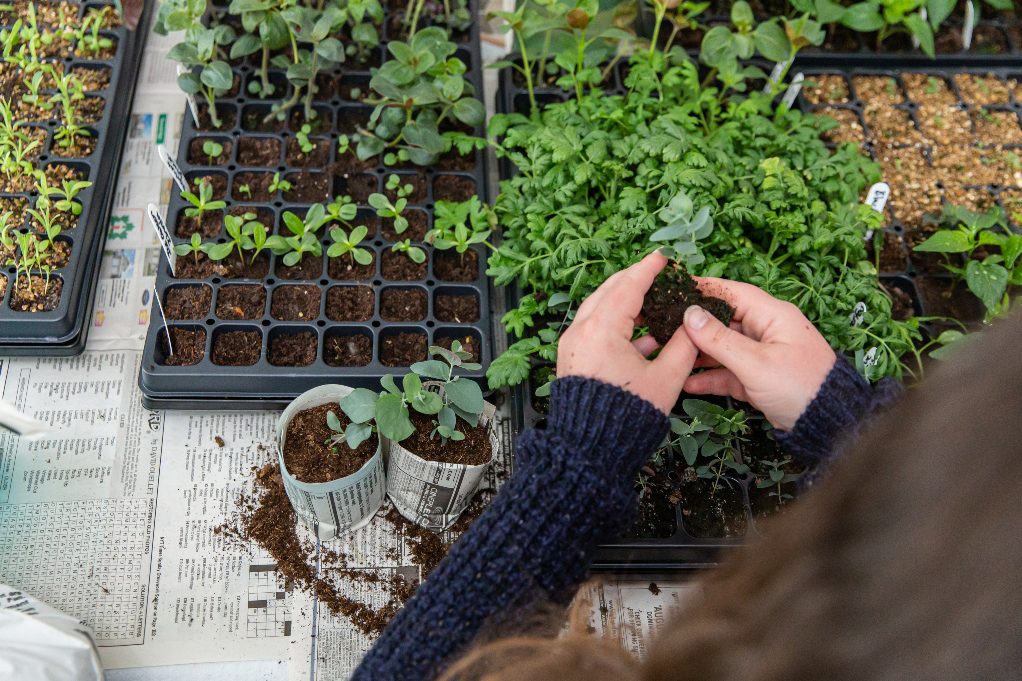
STEP THREE: SOIL PREPARATION
The next step is to assess your soil situation.
Are you planting in an already established garden space? Then all you’ll need to do is add a couple of bags of compost and manure and arrange to get it tilled.
Is your space really overgrown, or are you starting from scratch? If you are starting from scratch, you need to assess your light situation. Do not plant your garden near tall trees, as they will suck the moisture out of the soil and shade the garden. Sun-loving vegetables need at least 8 hours of sun a day. More is better.
Once you’ve got that sorted out, hire someone to rototill the soil and remove all the clumps of grass or weeds. Wait a week and apply round-up or some sort of weed killer to the weeds and grass that spring up. Wait until the weeds die and remove them. Add compost, manure and black earth to your soil, then hire someone to rototill again.
(EDIT: Since first writing this post in 2019, rototilling has fallen out of fashion. Even though rototilling is not as popular anymore, do what’s best for you and your soil situation. Depending on if you choose to rototill or if you choose the no-till method, will determine which steps you’ll need to take at this stage of preparing your garden.)
If you are not comfortable using chemicals, you can do this same process without the roundup. You can put cardboard, landscaping cloth, or even a tarp over the soil to kill off the weeds. You can see my tarp set up for weed prevention in this video:
Even though you’ve done all that prep work, be prepared for there to still be a lot of weeds and grass this year. It takes a couple of years of diligent weeding to get the weed population down. You can surround your plants with grass clippings, wood chips, or mulch to help.
There are also some interesting gardening methods specifically designed to avoid weeds, such as lasagna gardening and square foot gardening. I fell in love with square foot gardening in 2019. Here’s a bit more about my experience and some resources I’ve made to help get you started:
- 8 Reasons Why You Should Square Foot Garden
- 4 Free Square Foot Garden Templates
- Garden Review: My First Year Square Foot Gardening
- Real-Life Design Ideas for Your Small Space Garden
Plan the Perfect Garden

Get your free Garden Planner and worksheets and start creating the garden of your dreams.
step four: Pick your Seeds
There are so many vegetables to choose from! What you plant this year will largely be determined by your personal tastes and how much space you have. Here’s what I recommend for your first year:
1. Potatoes
Potatoes come in a large package of smaller potatoes with white shoots growing out of the eyes. If you have potatoes around the house that are old and growing white shoots out of the eyes, don’t throw them away! Cut them in half so that each half has at least one shoot. Dig as deep of a hole as you can and put the potato in. You will have to hill your potatoes once or twice in the season.
2. Onions
You can buy onions from seed packets, but I don’t recommend it for your first year of gardening unless you want green onions. If you want larger onions, buy the small bags of onion bulbs instead. Onions require zero maintenance, just a quick weeding every so often.
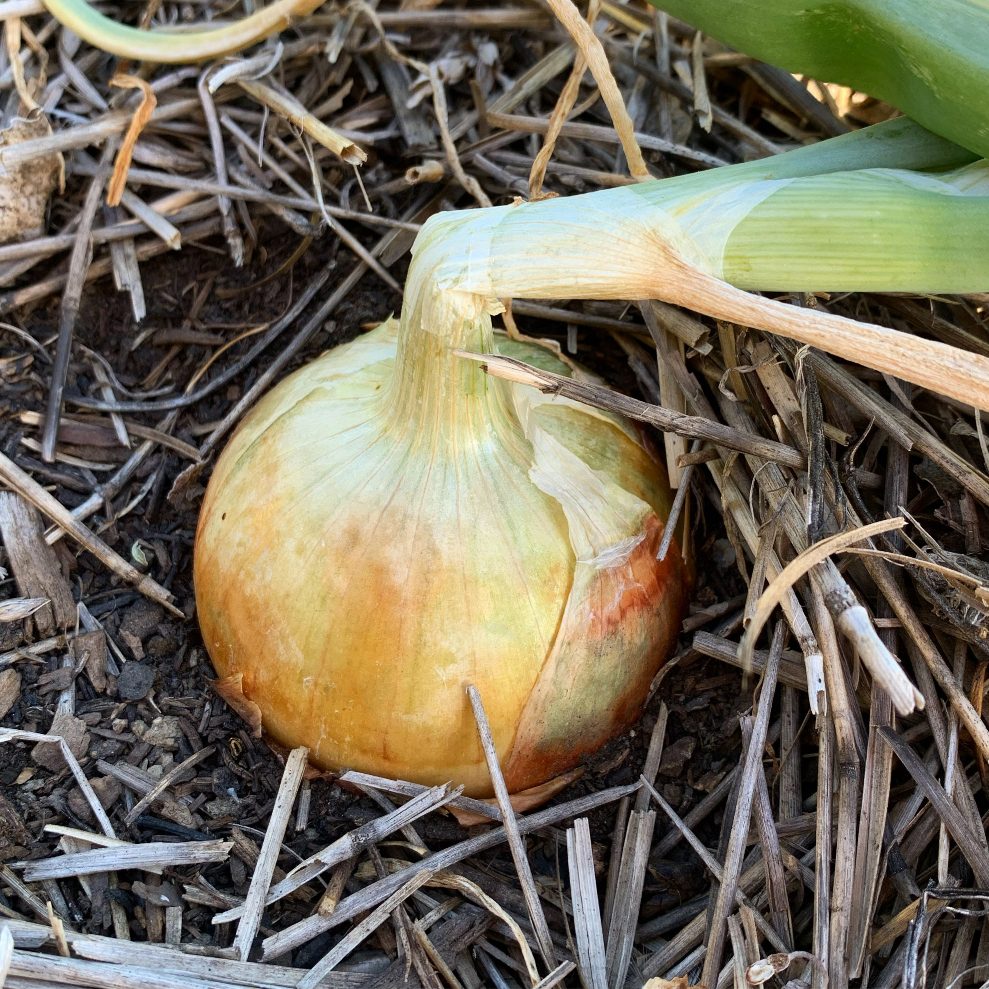
3. Carrots
Carrots are easy to grow and fun to harvest. Thin them out (remove a few of the plants) a few weeks after you plant them for larger carrots in the fall. It’s best to leave your carrots in the ground for at least one frost, as they will be sweeter.
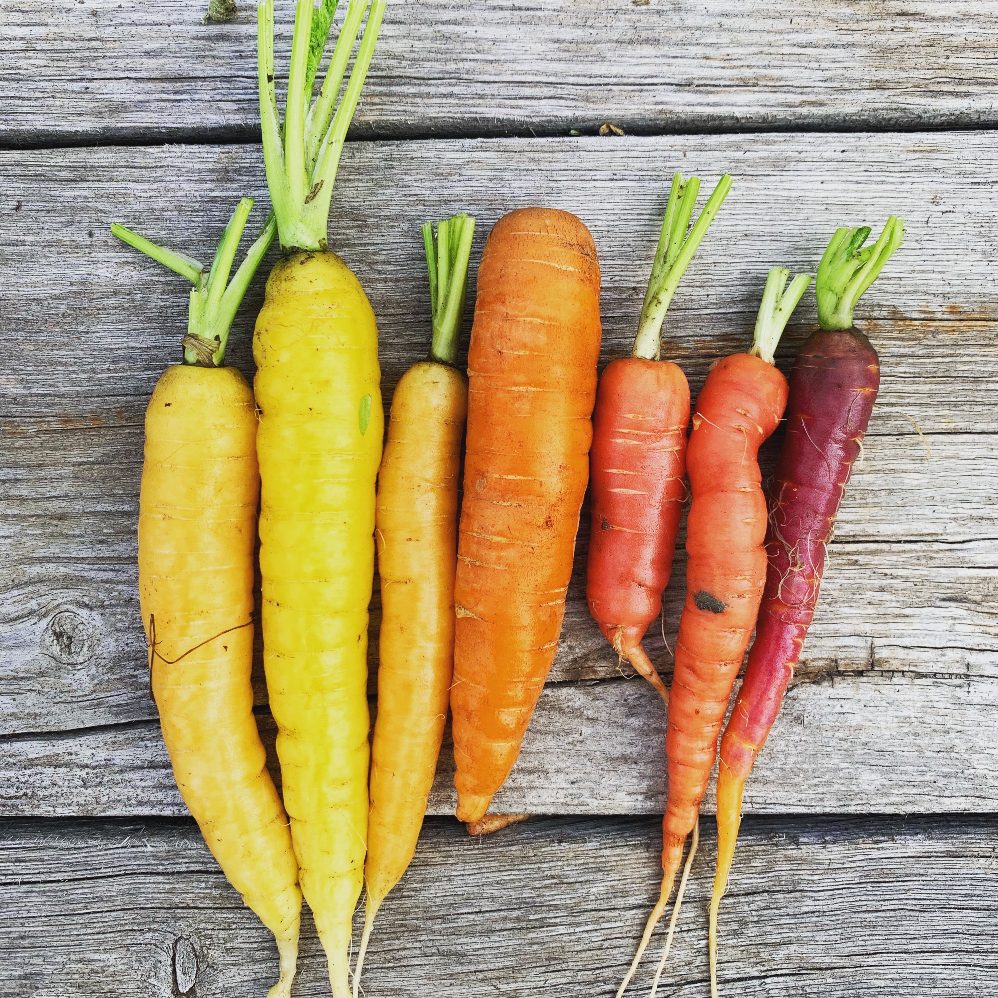
4. Peas & Beans
All peas and some beans require a trellis to grow. You can use chicken wire, buy a trellis, or even make one with garden steaks and three rows of twine. If you don’t want to bother with a trellis, plant a bush variety of bean.
Do not plant peas or beans if you will be away on a long vacation in the middle of July!! They will get too hard if left too long, and all of your work will be for nothing.
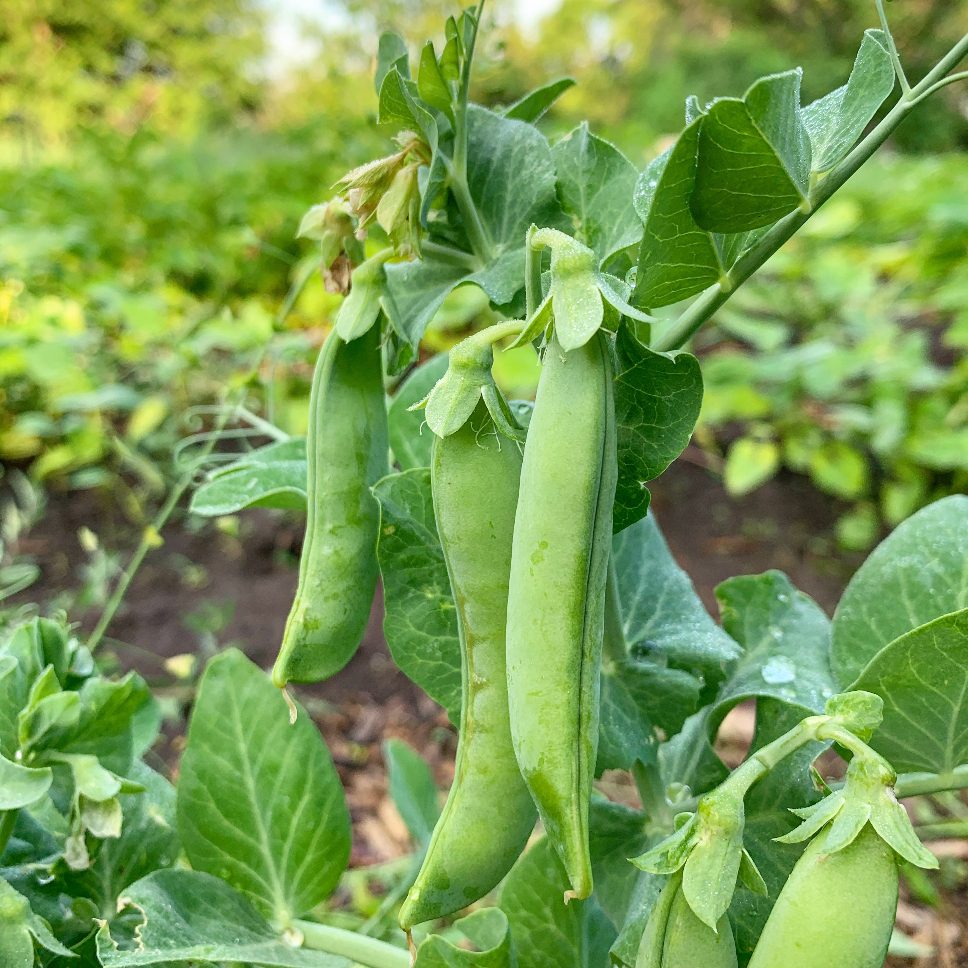
5. Swiss Chard
I LOVE swiss chard. It wasn’t a vegetable I ate growing up, but it’s so much easier to grow than spinach and is pretty similar in nutrition and taste. Bonus, you don’t have to worry about bolting!!

6. Lettuce
Lettuce is easy to grow and there are tons of varieties to experiment with. I’ve had the best success with Buttercrunch. It’s easy to grow, slower to bolt and has a texture I like. Plant three small sections of lettuce a week apart so you’ll have fresh lettuce all summer. Once you cut the lettuce it will grow back so you can eat it again. Just don’t let it go to seed!
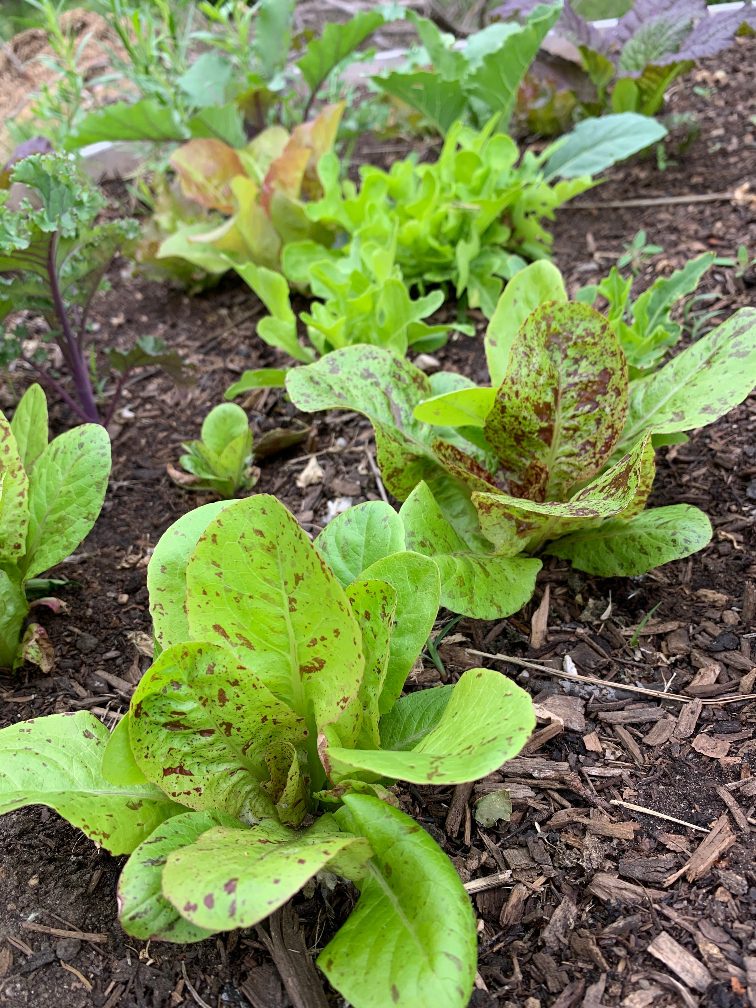
7. Zucchini
This plant is prolific, so only plant it if you like to eat it! I like to use it in bread, soups and tomato sauce, or wherever I need to sneakily add some nutrition. Do not ignore the direction on the seed packet to put three seeds in one spot. It seems weird, but the strongest plant will win out. Make sure to check your plant every three days once it starts producing. If you wait a week you will have a baseball bat on your hands.

8. Corn
Corn requires a bit of space but is easy to grow. Plant two or three short rows versus one skinny row so the corn can pollinate. The rows should be 30 inches apart and the plants thinned out to 12 inches. You won’t get a decent amount of corn if you skip this step. Wear gardening gloves when you’re planting, because all corn seed is treated.
9. Tomatoes
Tomatoes are the most labour-intensive plant in this beginner garden. However, the taste of a fresh tomato or homemade sauce is well worth the effort!
Whether you purchase plants or start them earlier from seed, you’ll need to harden them off (put them outside during the day and take them in at night) for about a week before you plant them. This is why you need to buy your plants a week ahead of time. Do not place them in a super hot location just yet, and shelter them from the wind.
Each tomato will need a cage around it so the plant does not touch the ground when it’s bigger. If your tomatoes grow on the ground they will likely rot. You might also want to put a coffee can around the base of your cage. This protects your plant from the wind when it’s small, and helps support the plant when it’s mature. For envy-inducing tomatoes, water once a week with compost tea or some other fertilizer for vegetables.
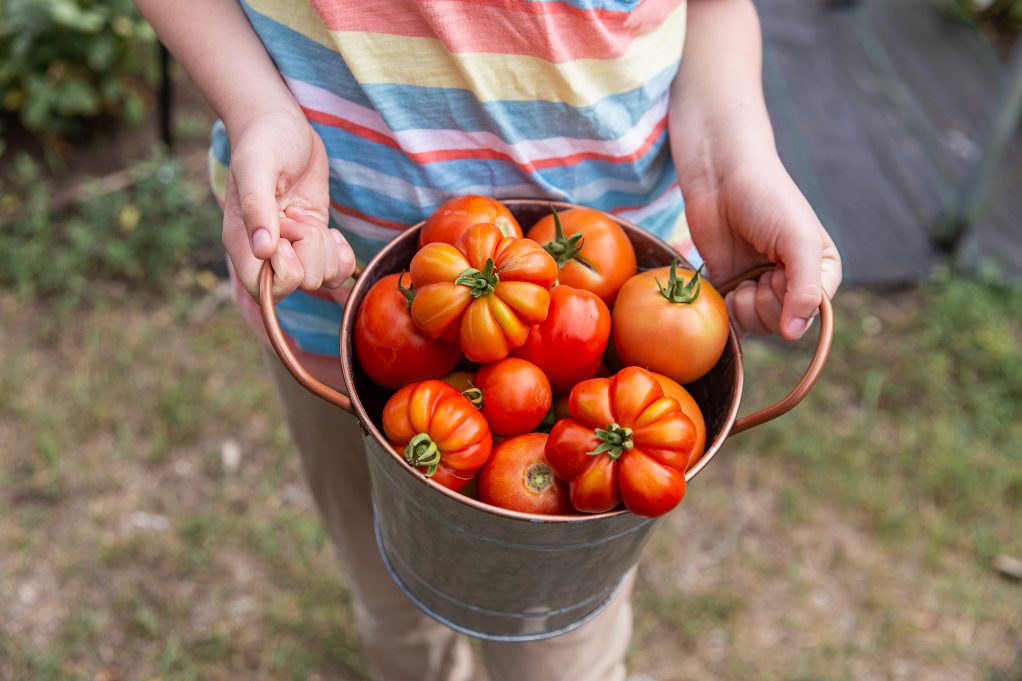
Finally, in Saskatchewan, you must pick your tomatoes before the first frost. This means that you will be picking most of your tomatoes green. Do not leave them out during a frost, or your whole crop will be ruined.
If you don’t like tomatoes or don’t think you’ll want to make any sauce, you might want to skip them your first year. Check out these blog posts for more on successfully growing tomatoes:
- HOW TO PICK THE BEST TOMATO VARIETIES FOR YOUR GARDEN
- To Prune or Not to Prune (Your Tomatoes is the Question)
- The Foolproof Way to Grow the Best Tomatoes–Even if You’re a Beginner Gardener
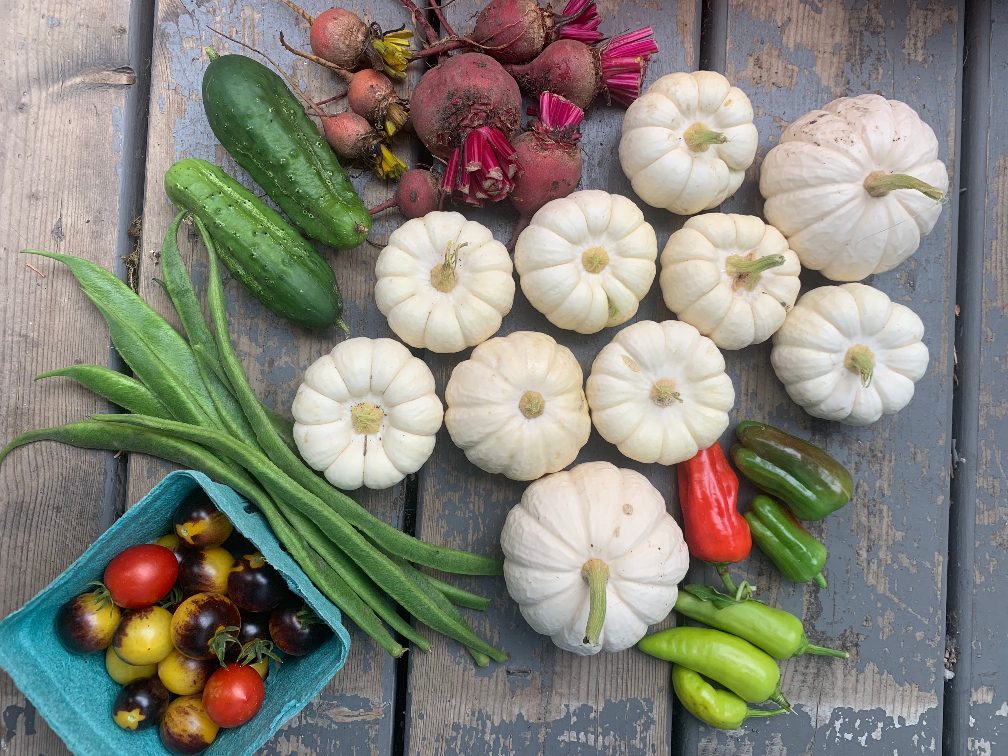
Plants I do not Recommend Your First Year of Vegetable Gardening
1. Peppers
I’ve never had great success with growing peppers and find that they die easily. Your first garden is all about building confidence! If you must have peppers, here are my best picks for beginners.
(EDIT: Since first writing this post in 2019 I have had several successful successions of peppers. That being said, while I now know how to grow great peppers, I still don’t recommend them for beginner gardeners. They require a lot of steps and early seed starting, so they are better suited for more experienced gardeners.)
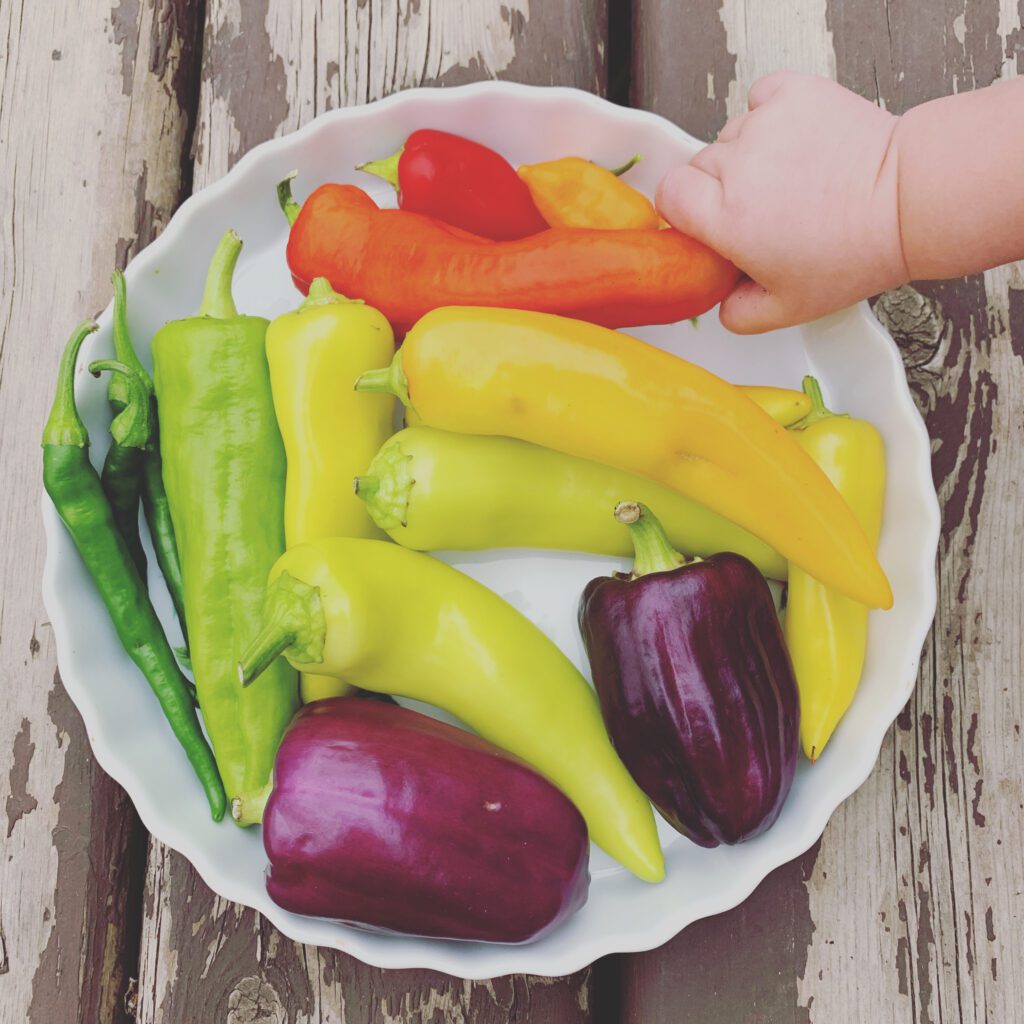
2. Cabbage
Cabbage tends to split if it doesn’t get consistent water. A beginner gardener is more likely to be lax about watering. Also, cabbage can attract a lot of bugs that beginner gardeners would not want to deal with. This is especially relevant for prairie gardeners.
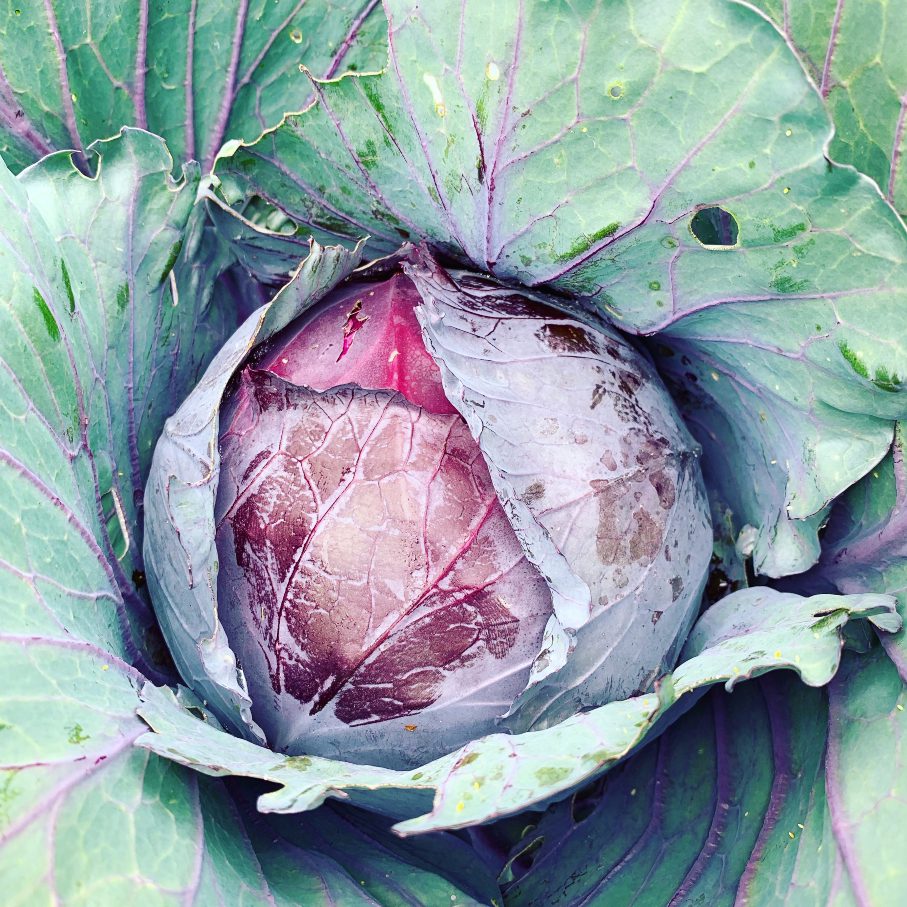
3. Spinach
I’ve never had much luck growing it, and whatever manages to come up seems to bolt in about two seconds.

4. Pumpkins & Squash
Both pumpkins and squash are very easy to grow, but I’m assuming that you probably don’t have a lot of space in your first year of gardening. If you do have space, however, definitely give them a try. Word to the wise: one spaghetti squash plant can produce 20 squashes.
5. Radishes
Radishes bolt quickly and are quick to turn woody. You need to check your garden every day to pick them at the right time. In all my years of gardening, I have never grown a decent crop of radishes. If you’re feeling nervous, remember the wise words of my Mother-in-Law: “things grow.” She said this a lot to me last year as a fretted if I was “doing it right.”
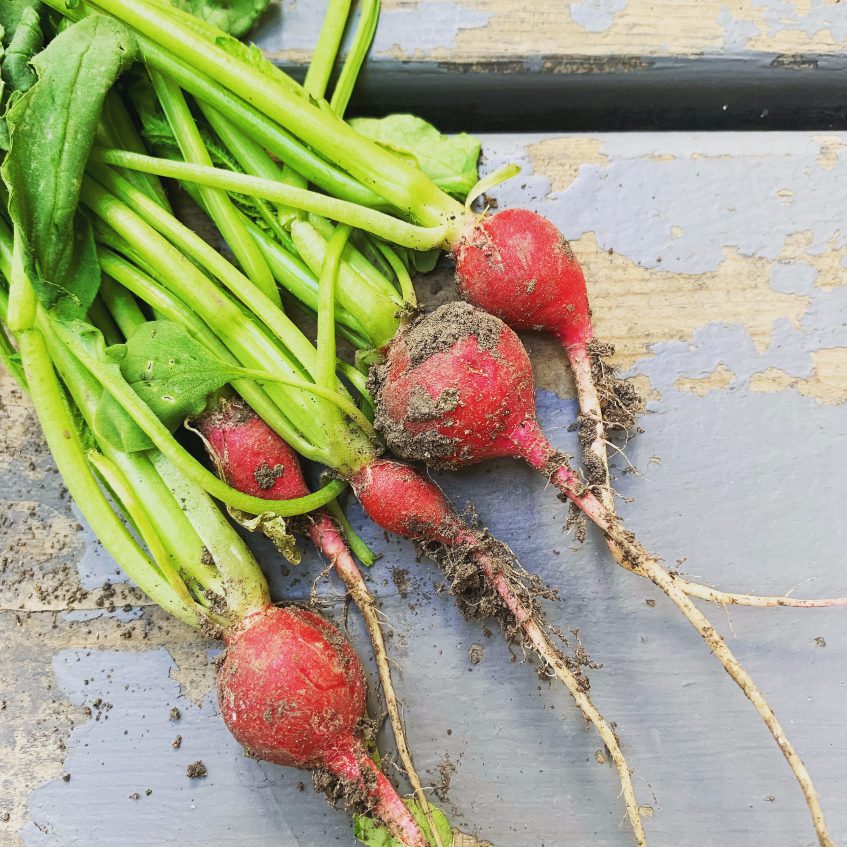
6. Cucumbers
If you have a lot of space you can give them a try. For me, they make this list because they need a decent amount of water and need to be picked every three days once they start producing.
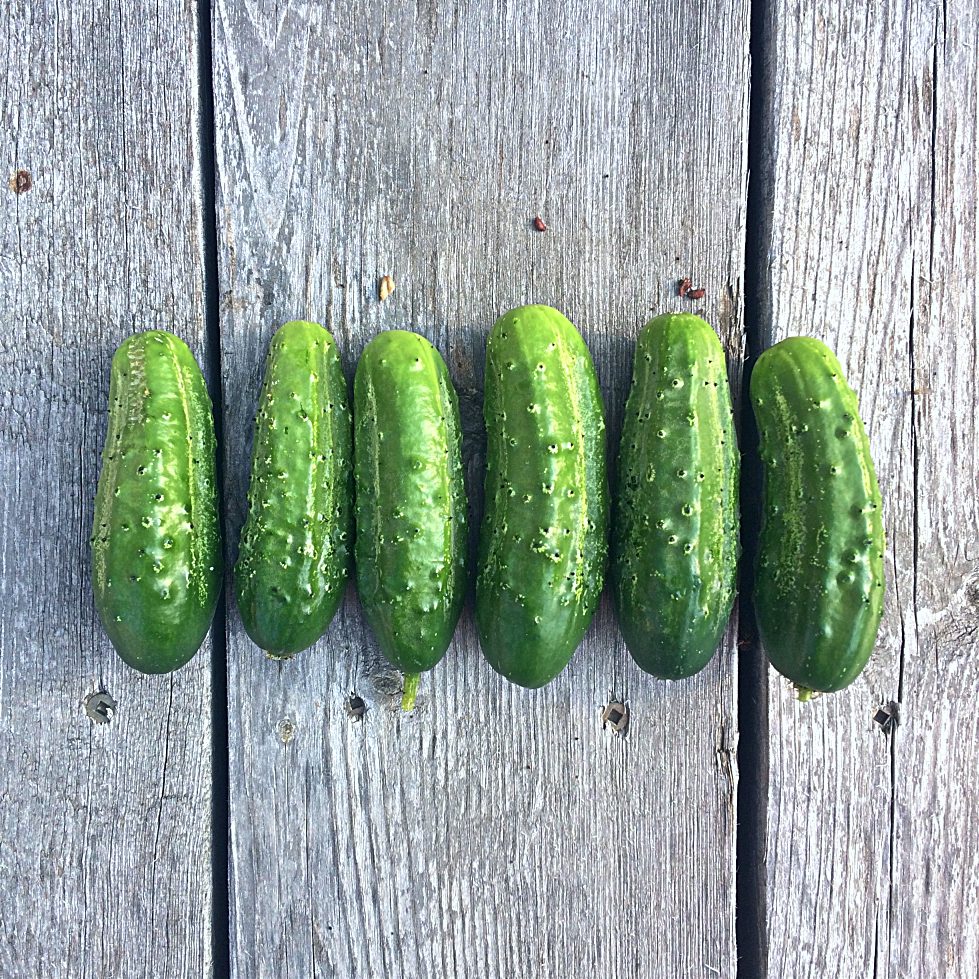
7. Plants of the Brassica family
Kale, broccoli, cauliflower, and Brussel sprouts are all especially prone to pests, especially if you live in a farming area like Saskatchewan. If you want to learn how to grow bug-free broccoli, check out these 6 organic ways to keep bugs out of broccoli.
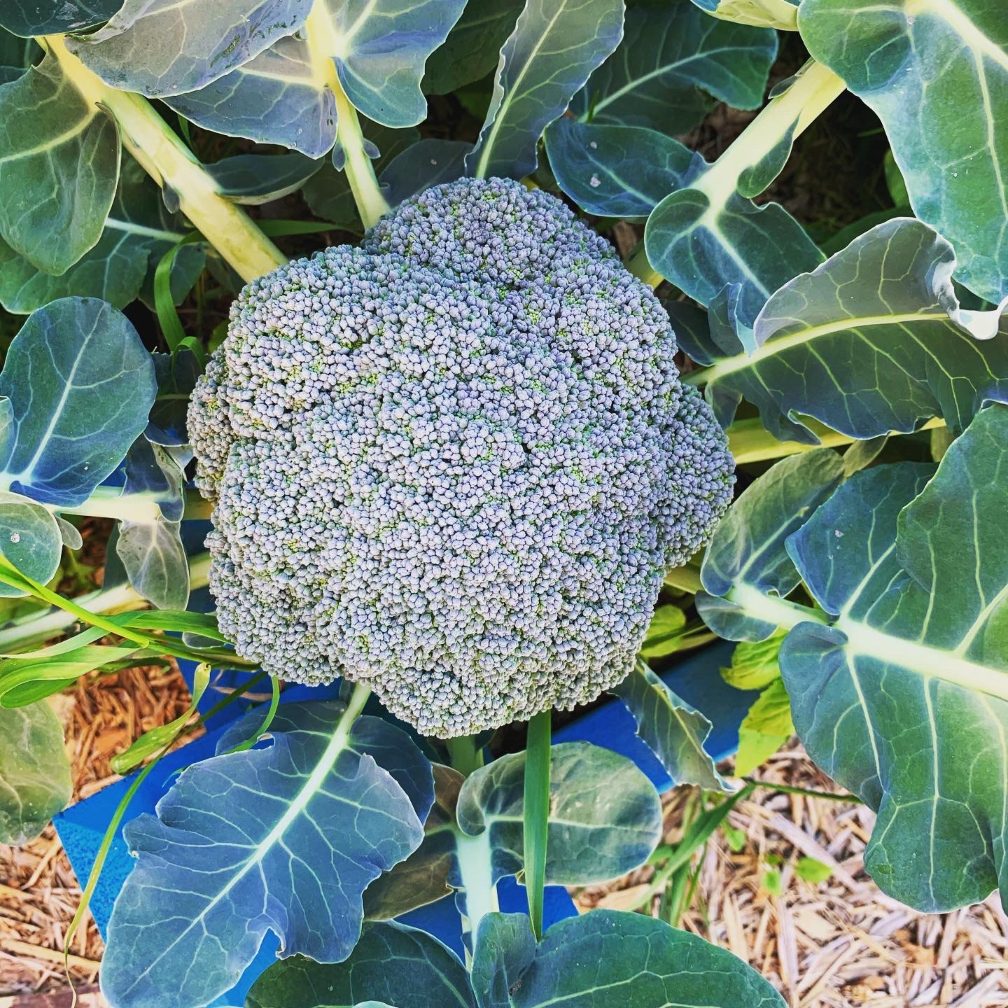
Looking to grow a specific kind of garden? Check out these posts to get started:
- HOW TO START A CUT FLOWER GARDEN
- How To Start A Square Foot Garden
- How to Start an Indoor Herb Garden from Seeds
Plant Families & Rotation
One last thing: some plants don’t grow well beside other plants. In a small first garden, you probably don’t have to worry too much about this, but it is good to know about for once you start expanding. I would worry most about how tall each plant grows when deciding which plants to put next to each other. For example, corn and peppers should not go next to each other because the peppers won’t get enough light.
If you have a larger garden, you’ll also want to make sure you keep a map of what you planted so you can rotate your crops. It prevents disease and keeps your soil healthy. For your average home gardener, though, you probably don’t need to worry about plant rotation. You can just add soil amendments and compost regularly so it’s not as big of an issue.
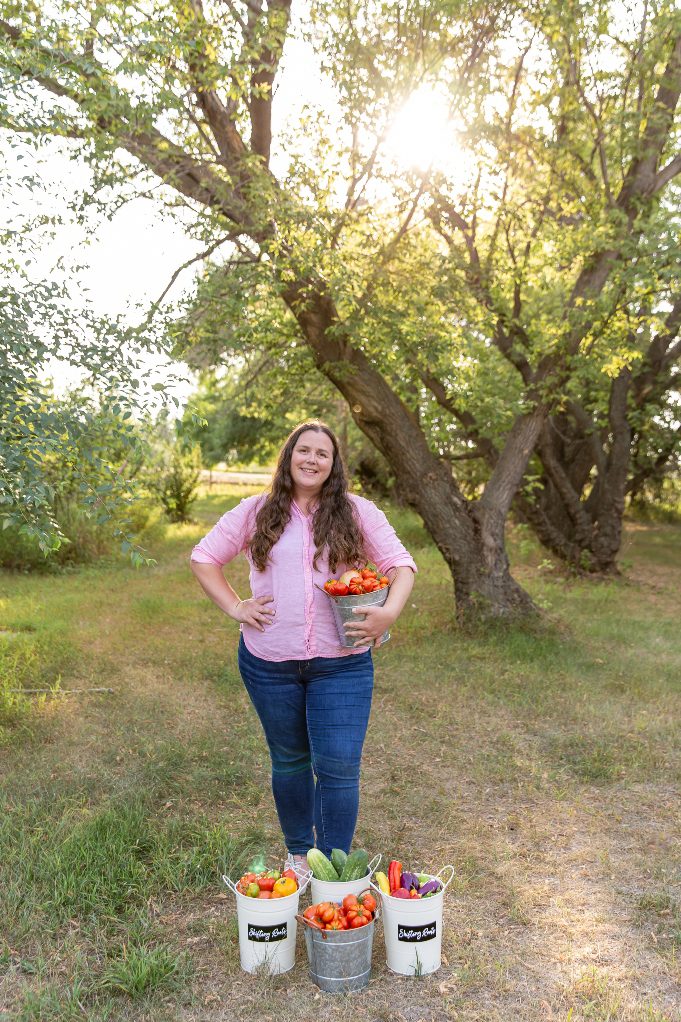
That’s it! So get out there and get planting! Questions or advice? I’d love to hear from you in the comments.
NEED MORE HELP IN THE GARDEN?
Green thumbs aren’t just given out at birth. They’re a combination of learning about gardening and trial and error. If you wish you knew more about gardening and had more confidence in your abilities, you need the Growing Roots Gardening Guide.
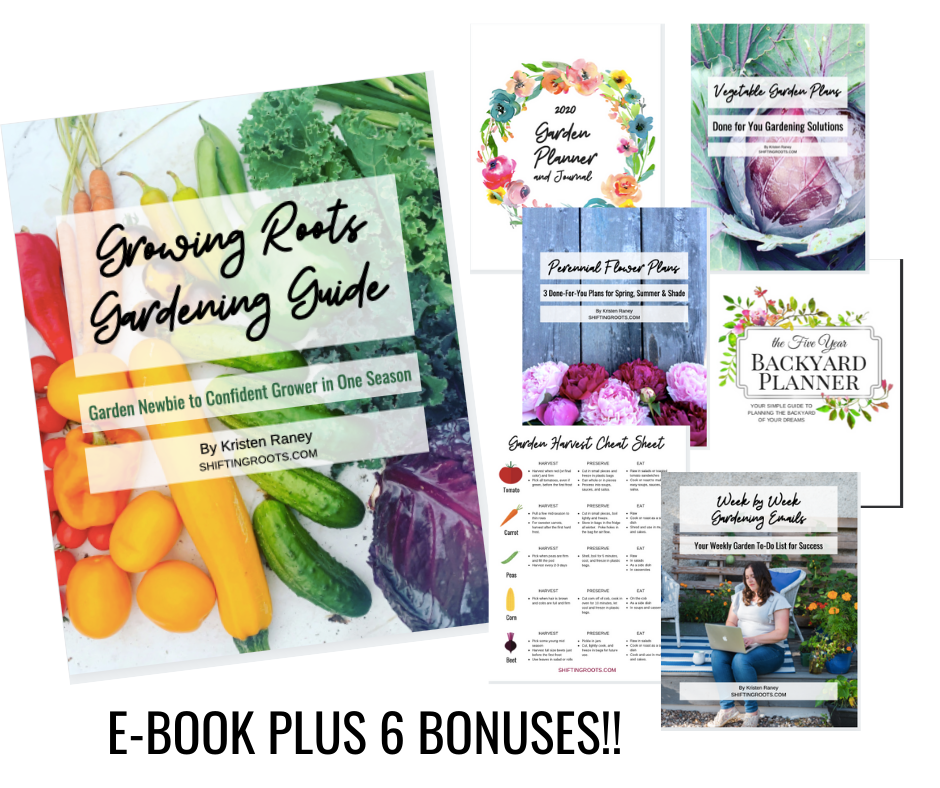
It’s an e-book plus 6 bonuses–everything you need to go from complete garden newb to confident in one growing season. Get all the details of what’s inside here. Happy gardening!
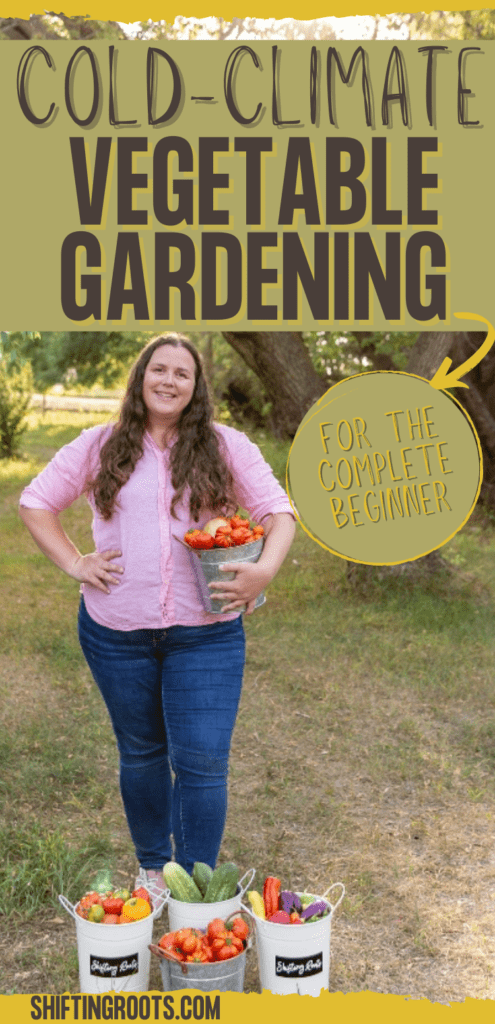
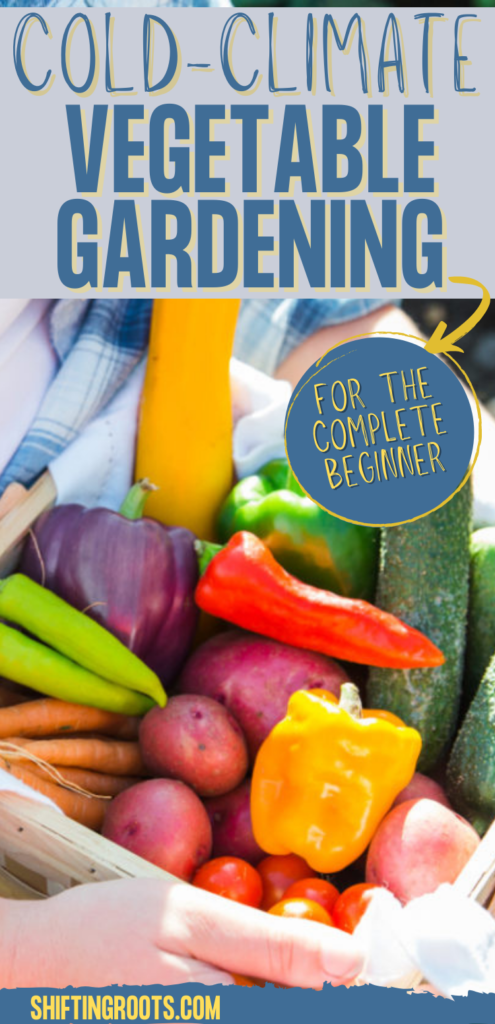

Leah Weber
Jobie Medina
Kristen Raney
Lauren
Kristen Raney
Andrea Bates
Kristen Raney
Kristyn Laird
Kristen Raney
Naomi Suchan
Hilda Nikal
Nicole
Kristen Raney
Karen
Joanie